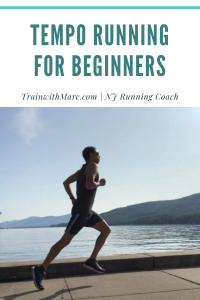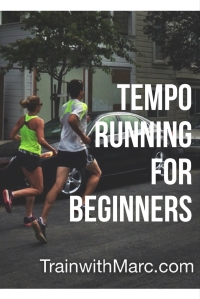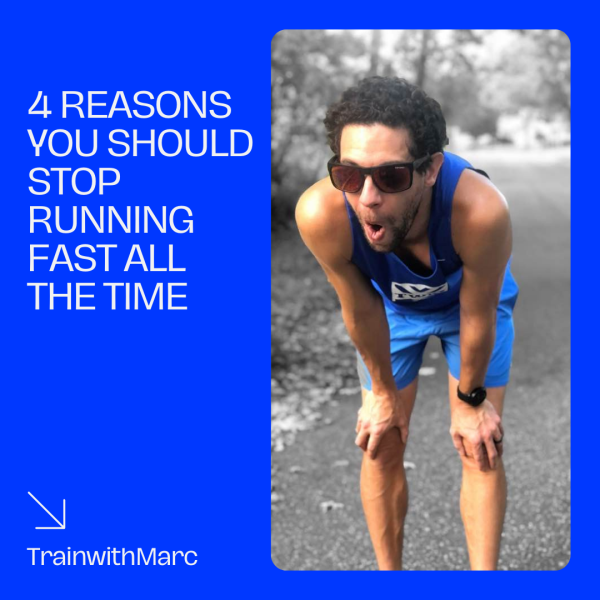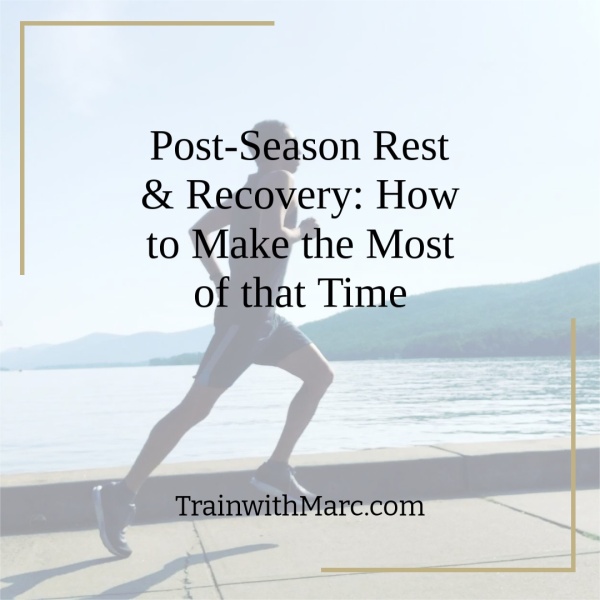Details on tempo running and when you should add one to your training
Tempo runs are a staple in every type of training program you’ll come across. They are the backbone of endurance running and help us become stronger and faster runners.
Runners often ask me for tips when they start incorporating tempo runs into their training.
- What pace should I run my tempo at?
- How long should my tempo run be?
- How will I know if I’m hitting my pace?
- Where’s the best place to run a tempo: track, treadmill, or roads?
Without knowing any better, a tempo run can appear to be very intimidating. If you aren’t good at pacing yourself or if you’ve never truly done a tempo run, then I can totally see why you might be scared to try. I’m here to tell you that you can totally run a good tempo run!
Here is some information about what a tempo run might look like for you and how you can run one:
- Tempos are a sustained effort – anywhere from 20 minutes to an hour
- They’re most often run at a “comfortably hard effort”
- Paces vary for each and every runner – think “1-hour race pace” and that’s your pace.
- If you know your max heart rate, tempo pace falls at about 88 to 92% of your max.
- Everyone’s tempo pace is different!
- If 20 continuous minutes are tough for you right now, don’t worry – split it up into shorter segments with short rest!

Purpose of Tempo Runs
Your tempo run is to find your “comfortably hard” running pace and sustain it for however long you’ll be running – whether that’s a set time or a set distance.
The goal of your tempo is to run at a consistent pace which will maintain or increase your body’s ability to create and clear lactate from your system. The more efficient you are at doing this, the better you’ll be able to perform on any given race day.
As your fitness improves, you’ll be able to run faster at the same effort level because your running efficiency and running economy have improved.
Running threshold and tempo workouts are supposed to be faster and slightly harder than your everyday basic running pace, however, the efforts should still be comfortably hard. During a tempo run, you should be able to hold a small conversation because the effort isn’t overly taxing. Tempo runs are all about working on sustaining our threshold – the point at which we create and clear lactic acid. It’s important to create this tolerance to lactic acid because the benefits of clearing it are important as we get into races and are trying to run fast.
Potential Roadblocks to Running Tempos
If your training run pace (easy pace) and your tempo run pace are similar, you have some options you’ll want to look at.
My suggestion is to slow down your easy pace. If every run feels tough or hard to complete, it’s most likely because you are training at too fast of a pace. Your easy run effort might actually be closer to your marathon pace and this effort is too close to your anaerobic level.
By slowing down your training runs you offer your body the chance to recover before your next hard or long day. If all your runs are too fast, your body will not recover and you’ll be more susceptible to injuries or sickness. Not only that, but by slowing your pace down on your easy runs, you’ll be able to run further on each run and you will build more stamina that way.
The goal of any tempo should be this: run “comfortably hard” (10k-15k race pace) for an extended period of time. This effort then translates to allow your body to more efficiently clear waste byproduct of running really fast.
Tweet
Tempo Recommendations:
1. Do the tempo on a flat-ish course.
2. Use a GPS or a marked course (a track or treadmill) for the run.
3. Ease into the tempo portion.
4. Maintain the same pace throughout – even in the last 400 meters when you still might be feeling good.

Real-Life Application
If a runner ran a half marathon in 2:05 (9:32 pace), a coach would recommend that they train anywhere between 11 minute pace to 11:30 pace for any given training run. This will ensure that the runners are building mitochondria, strengthening their aerobic capabilities, and working on their slow-twitch muscle fibers.
Their tempo pace, based on a 2:05 half marathon, would be anywhere from 9:50 to 10:15 per mile, which is the pace they could sustain for an hour. This runner would also be able to race a marathon (given appropriate training) in 4:22. Slowing down this runner’s training pace will increase their aerobic capacity as well as allow their body to recover, while simultaneously having the ability to increase their mileage.
How to determine YOUR tempo pace
The first thing you should do is have an idea of what shape you’re in. Use a vDOT chart to determine your closest race performance. Then, use that same vDOT number associated with your race performance and find the MP (marathon pace) that lines up with your vDOT number. This is the pace at which you can most likely sustain for a one-hour race.
Disclosure: There also may be affiliate links present – which means if you buy something with that link, I make a small commission.
To get the full context of vDOT and tempo training, try picking up a copy of Jack Daniels’ book.
To put it another way… To race at a specific pace, you must be able to train at paces faster and slower than the pace at which you’d like to race at. Using vDOT charts help, as well as having a running coach.

Remember to properly warm up and cool down from any workout or race that you attempt to do.
Where to run your tempo run
As far as where you should run your tempo, take these various surfaces into account. They all have pros and cons, so be sure to plan ahead for whatever terrain you end up choosing. Here’s my take on where you tempo:
On the Treadmill
Advantage: Consistent splits. Constant terrain
Disadvantage: Could be potentially boring. No variation to simulate racing.
On the Track
Advantage: Splits every 400 meters to ensure you’re on pace.
Disadvantage: Could be potentially boring. No variation to simulate racing.
Road
Advantage: Can be challenging with undulating effort levels. Use RPE as a guide.
Disadvantage: Must gauge your run by effort, even if you have a GPS watch. Possible inconsistent splits.

Want more workout ideas?
- How to run track intervals
- 5k workout to build speed endurance
- What is speed work and when should I do it?
Thanks for reading until the end! Ready for more?
Want my weekly running newsletter?
- As a distance runner, we can't ALWAYS be in LSD mode
- Anyone have plans this Sunday? How 'bout an easy 10?
- What I learned and so you can use with your own training
Ready to Shop Small & Local?
Check out TrainwithMarc’s online store and get ready for your new training cycle!
Looking for running resources?
Find me on social media!
Searching for a running coach? TrainwithMarc has flexible schedules, dynamic plans, and access to a coach who’s worked with every type of runner.
TrainwithMarc will design a training plan based on your needs, running history, and your goals.
Gear I Love

My Favorite RUNNING gear from Amazon ⬇️
Feetures socks: https://amzn.to/36gNRjU
Tifosi Sunglasses: https://amzn.to/349OuJx
Garmin 235: https://amzn.to/2YgXJ9M
Garmin heart rate monitor: https://amzn.to/2JUun8a

Current Running Shoes ⬇️
Brooks Levitate: https://amzn.to/2GazmUh
Brooks Revel: https://amzn.to/3ndnwcO
Nike Pegasus: https://amzn.to/36htGlX

Running Recovery Gear I use daily from Amazon ⬇️
Sonic X Percussion Massage Gun: https://amzn.to/2S87qTt
Foam Roller: https://amzn.to/2MzrAly
CEP Compression socks: https://amzn.to/30gZLGY

TrainwithMarc’s Social Media links ⬇️
Website: trainwithmarc.com
Instagram: @TrainwithMarc_LLC
Twitter: @marcpelerin
Facebook: @TrainWithMarc
TikTok: @Run_Coach_Marc
Venmo: @marcpelerin

























16 thoughts on “Tempo Runs for Beginners”